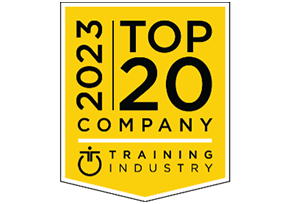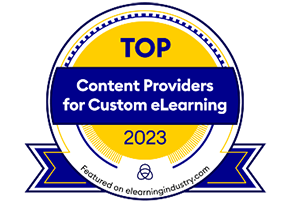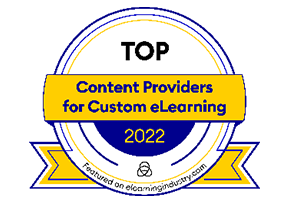Home :: Continuous Learning ::
Content Curation
Enable Greater Learner Involvement and Recognition Through Content Curation

Content Curation provides a repository of relevant and thoughtfully curated learning materials that learners can access easily. It is an exercise to source, sift, or organize to share the most relevant content. The value of Content Curation lies in its ability to offer on-demand, relevant, and current content to learners—in their workflow.
Learners don’t have to plough through masses of content from an LMS, portals, the intranet, wikis, social forums, news feeds and search results to find quality content. They feel empowered as they browse through various kinds of relevant content and pathways.
Our Content Curation Process
We will help you support Formal and Informal Training and boost Self-Directed Learning through Content Curation. In our consulting service, we recommend a 5-step process of Content Curation for corporate trainings.

Identify
Begin the exercise with the identification of the focus areas you want to curate content for. Then, identify the sources for them, including the internal knowledge base and external sources.

Filter
Then, begin the process of reviewing the collaterals with the help of Subject Matter Experts (SMEs). By sifting and filtering, you can categorize learning resources that are most relevant to the selected focus areas.

Contextualize
Leverage the SMEs further and have them provide context to the content. Their feedback helps learners relate to the content and apply it in the recommended manner to generate the highest impact.

Share
Once the content is identified, it can be offered to the learners either as stand-alone nuggets or through a learning path. At this point, define how this should be shared (through a platform, online tool, or portal).

Continuous Improvement
The process of Content Curation for corporate training is an ongoing one. Once the rhythm is established, obtain feedback and review how the content is being consumed. These indicators will be useful in identifying measures that will help you improve further.
Our Tips and Strategies to Multiply the Impact of Content Curation for Corporate Training


Align with What Learners Want – Create forums to obtain their input at the beginning of the course and collect ongoing feedback and analytics to assess usage patterns.

Establish a Team of Curators – Establish a core team that not only curates content but also re-strategizes based on feedback/usage patterns.

Offer Flexibility – Design the learning journey to be mobile-enabled (mLearning or Mobile Apps) to offer learners the flexibility to access curated content on the go and on the device of their choice.

Encourage Learners – Enable learners to contribute, recommend, and promote the usage of curation, highlighting what they gained through the curated content. This can help you create “communities of practice.”

Plan for Ongoing Updates, Refinement, and Enrichment – Use feedback, analytics, and inputs from SMEs to keep curated content relevant and meaningful for the learners.
Industry Expertise
- Banking, Financial Services, and Insurance
- Healthcare, Medical Devices, and Pharmaceuticals
- Retail and Consumer Goods
- Management Consulting
- Manufacturing and Logistics
- Media and Entertainment
- Government Agencies and Non-Profits
- Universities and Continuing Education
- Beverage and Tobacco
- Airlines, Aviation, and Aerospace
- Information Technology and Computer Software
- Automotive Sector
- Professional Skills Training
- Sales Training
- Leadership Training
- Induction and Onboarding
- Diversity, Equity, and Inclusion Training
- Sustainability Training
- Compliance Training
- Application Simulations Training
- Product Training
- Soft Skills Training

2023 Top Training Companies for Custom Content Development.

Ranked #1 in the Top Content Providers for Custom eLearning in 2023.

Ranked #1 in the Top Content Providers for Custom eLearning in 2022.
Case Studies

How a Global Technology Company Created a Training Program Using Scenario and Video Based Learning

Improving New Hire Time-to-productivity by Transforming Instructor-Led Induction and Onboarding Training to Blended Learning
